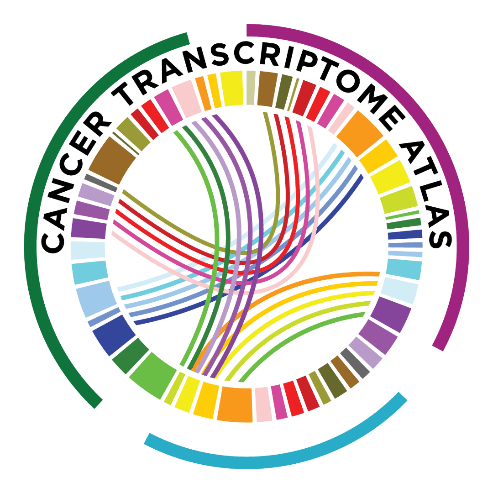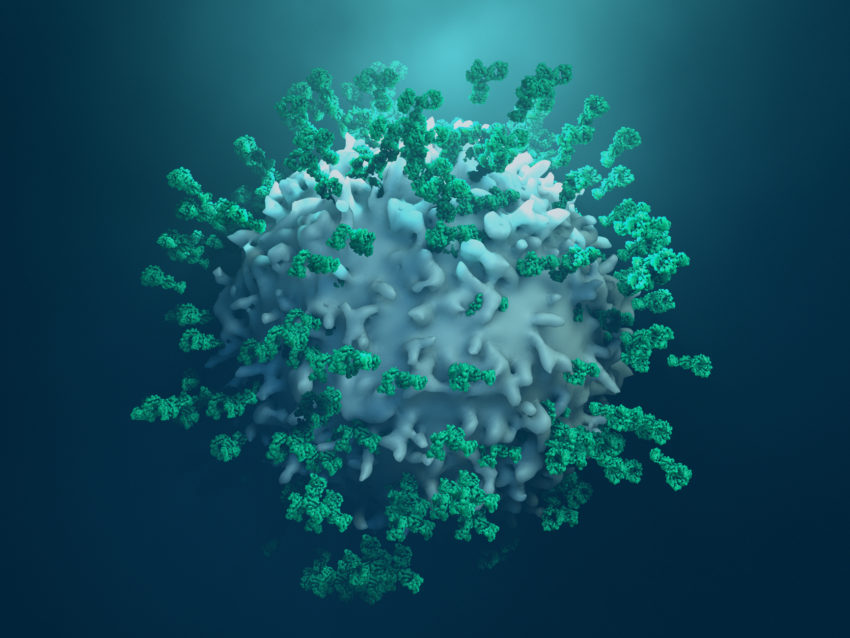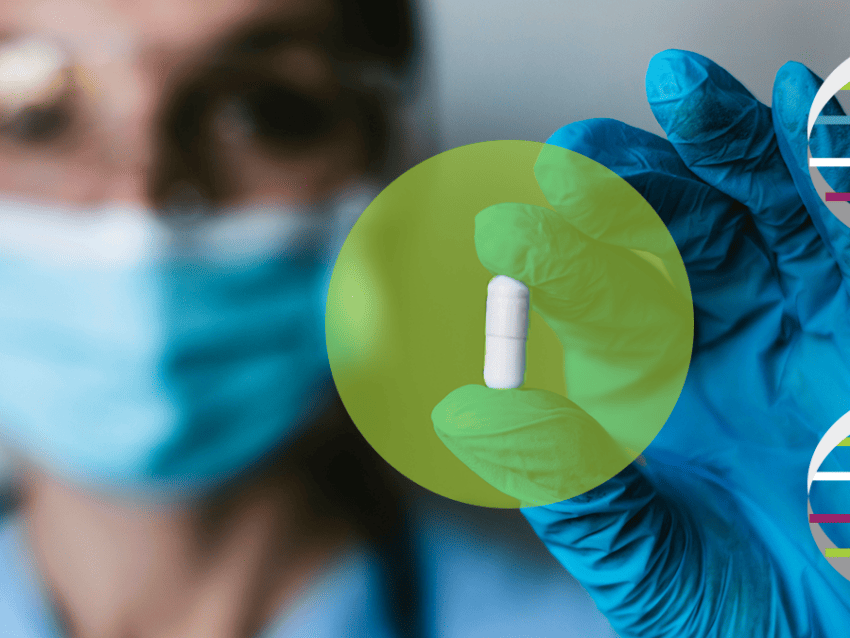
Top Ten Challenges in Cancer Immunology & Immunotherapy
Cancer immunotherapy (CIT) research and investments have progressed in the past few years thanks to its successful application across a broad range of human cancers. However, only a minority of patients experienced life-altering durable survival from immunotherapies. These outcomes likely reflect the complex and highly regulated nature of the immune system and its interplay with cancer cells.
Drs. Priti S. Hegde and Daniel S. Chen from Genentech and IGM Biosciences respectively summarized the top 10 crucial questions and roadblocks standing in the way of advancement and broad success of these therapies in a seminal paper published in Immunity, Volume 52, Issue 1.
These are the top 10 challenges facing cancer immunotherapy in progressive order from pre-clinical studies through understanding the environment where cancer grows, to regulatory issues related to clinical trials.

1. Development of pre-clinical models that translate to human immunity
Human immune biology isn’t always well reflected in the animal model, but in cancer immunology this difference is striking; in humans, tumor antigens, composition of immune cells in the microenvironment, and the complexity of immune suppression make the creation of an ideal pre-clinical model a first hurdle.
In a classic preclinical model cancer cell lines are implanted, resulting in tumors lacking the characteristics that influence a long-lasting immune response that is seen in humans where it is believed that cancer evolves over a longer period of time, during which it shapes relationships and interactions with the human immune response.
An alternative is the genetically engineered models that come closer to representing human disease, but they don’t mimic the sequential accumulation of mutations that occur through the course of human cancer evolution, so they are immunologically cold and genetically stable and do not respond well to immunotherapy.
Ex vivo human tumor explant models are maybe the closest model and are particularly appreciated in CIT studies since they allow tumor-immune cell interactions to be observed using a combination of immunostaining and real-time imaging. But even these models are challenging due to the complexity of the immune system itself as distinct cell types within the tumor microenvironment function differently and they can’t be easily replicated in a single cell type.
Just think about the complexity of the immune infiltrate itself: human tumors can be categorized as being inflamed (or “hot”) characterized by close proximity of cancer cells with tumor; in immune-excluded phenotypes, the immune cells are embedded in the surrounding stroma and away from the tumor cells; immune desert phenotypes are associated with tumors devoid of tumor-infiltrating lymphocytes (TILs). Different murine models present one or another of the phenotypes, implying careful selection of preclinical models to ensure that key features of the human cancer are present and retained.
2. Determining the dominant drivers of cancer immunity
The complexity of the cancer cells, their immunogenicity, the interplay with their surrounding environment and with the immune system is the root of the challenges in finding a durable treatment. Immune response to cancer is mostly driven by cytotoxic cells. Inflamed tumors are characterized by cytotoxic T cells infiltration or by high PDL1 expression by tumor cells. Inflamed or “Hot” tumors are associated with response to cancer immunotherapy.
Immune-excluded tumors are characterized by high TGFb signaling in the stroma, myeloid inflammation, and angiogenesis, and they respond poorly to CIT, however, there is some evidence that a combination of anti-TGFb and anti-PDL1 may switch these tumors to “hot” and responsive. Immune desert tumors have high tumor cell proliferation, are metabolically active and stress-addicted, which makes them targets for pathway-specific therapeutics that inhibit metabolic pathways these cancer cells depend on.

Another driver of cancer immunity is tumor antigenicity: genomic instability defined by MSI or by high tumor mutational burden (TMB) creates antigenicity for a cancer cell, and biomarkers such as IFNg signatures and B cells indicate the existence of antitumor immunity. Inflamed tumors with high antigenicity usually respond favorably to CIT. Or at least one would think. Not so easy: inflamed tumors undergo immune editing by promoting the loss of heterozygosity (LOH) in the human leukocyte antigen (HLA) locus, begging the question: is high TMB really a good thing, or do the high TMB tumors from highly inflamed cancer like NSCLC ultimately benefit (and survive) from CIT?
Furthermore, the impact of T cells responses against different antigens or epitopes are still to be defined: T cells response is stochastic and results from temporal competition of the responding priming T cells. Add this to the given intratumoral heterogeneity, and inhibition encountered within the TME and one can see how T cell response against an individual neo-antigen is more difficult to assess.
To all this add the fact that inflamed, immune-excluded, and immune desert phenotypes described above can be prevalent at varying degrees within a given tumor type and across cancers and one has an idea of how hard it is to determine what drives cancer immunity.
3. Understanding organ-specific tumor immune contexture
The organ in which the tumor resides has an impact on tumor growth and in metastatic cancer, divergent patterns of response to therapy emerge when considering the location of the metastasis.
For example, in the liver the presence of myeloid-derived suppressor cells, Kupffer cells, and liver dendritic cells predominantly promote a network of active immunosuppressive pathways, dampening the activation of CD8+ and CD4+ effector T cells as seen in patients with various cancers metastasized in the liver who do not respond to therapy and have shorter progression-free survival. This indicates the need for an organ-specific therapeutic approach.
4. Understanding the molecular and cellular drivers of primary versus secondary immune escape
Some patients have all the right conditions to respond to CIT but only 50% of them respond (primary immune escape), others experience remission for years but eventually the tumors progress (secondary immune escape). The primary escape is found in immune-excluded cancers, and the drivers are heightened TGFb signaling as observed in patients treated with monotherapy who didn’t respond to therapy but responded if treated with CIT and anti-TGFb. Inflamed, TMB-low tumors as well are often immune suppressed by the presence of myeloid inflammation which responds poorly to monotherapy CIT, whereas the addition of anti-VEGF seems to reverse the suppression.
Studying secondary escape is harder due to the difficulty of collecting tissue samples at the right times, before and after the escape event. It is hypothesized that loss of b2 microglobulin, downregulation of MHC expression, and loss of immunogenic mutations, or antigen loss might be involved. Secondary escape has been well documented in CAR T cell therapies and neo-antigen-specific T cell therapies: in case of hematological malignancies treated with CD19 CAR, it is unclear if tumor regrowth occurs due to downregulation of target expression or if antigen-expressing cells get depleted resulting in growth over time of subclones that do not express these antigens.
5. Elucidating the benefit of endogenous versus synthetic immunity
Endogenous immune response largely relies on previously primed CD8+ T cells that specifically recognize cancer cells. These immune cells can be re-invigorated or expanded by PD-L1/PD-1 inhibition, leading to recognition and killing of cancer cells, as well as further proliferation of the T cells.
Synthetic immunity refers to CAR T cells and CD3 bispecific antibody approach and promotes proliferation of both tumor-resident and non-specific T cells recruited to the tumor. Synthetic immune approaches enable the generation of an initial anti-cancer immune response to poorly immunogenic cancers, leading to upregulation of stimulatory cytokine, immunogenic cancer cell death, and further activation of endogenous anti-cancer immune responses but also to increases IFNg secretion and PD-L1 expression, which may dampen the synthetic immune response.
A synergistic therapy that includes both endogenous and synthetic approaches, combining synthetic immunity with inhibition of PD-L1/PD-1 may relieve any immune-suppressive effect of PD-L1 on T cell function, further enhancing the synthetic immune response. However, the right combination in the right cancer patients’ group needs to be studied.
6. Effective and efficient assessment of cancer immunotherapy combinations in early-phase clinical studies
With over 1,000 CIT combinations currently on trial, and ability to assess the most effective combinations as early as possible and deprioritize the rest is critical. To do this, improved preclinical models and/or a better understanding of where models translate would greatly assist in matching combination approaches to patient populations to be tested and lab test: specific imaging approaches that can provide insights into immune biology of different compartments, microenvironments, and organs may represent useful opportunities available to accelerate particular CIT combinations.

7. Full characterization of the impact of steroids and immune suppression on cancer immunotherapy and autoimmune toxicities
The use of steroids is necessary to treat the effects of an enforced immune response after CIT as autoimmunity may occur with the break of PD/PDL1. Given the overlapping mechanisms between anti-cancer immunity and autoimmunity resulting from checkpoint inhibition, it seems likely that corticosteroids would negate the very T-cell-based mechanisms that also lead to efficacy with immunotherapy. Based on clinical data, systemic steroids can weaken the anti-cancer immune response, but it doesn’t completely abolish it. So, an even more important challenge relates to developing more effective and specific CITs that can eliminate cancer cells without generating autoimmunity or immune-mediated toxicity.
8. Maximizing personalized approaches through composite biomarkers
What is the right therapeutic approach for any specific disease given that diagnostic testing for cancer patients is not fully embedded into clinical practice? There is epidemiological evidence on the positive impact of diagnostic-based treatment on healthcare cost-effectiveness and patient quality of life favoring diagnostic-based treatment decisions (e.g., oncotype diagnostic references in breast cancer). For multiple reasons, there is a lack of information to support doctor decisions.
Unlike targeted therapies where the diagnostic is usually a genetic aberration in the target itself (e.g., Her2 amplification) which is often defined as a binary (yes or no) assay, biomarkers in CIT are commonly characterized by a gradation of associations and continuous variables as multiple different biomarker cutoffs should be applied in different indications. In clinical trials, the challenge will be in ensuring statistical rigor is applied to the biomarker hypothesis, and the use of consistent definitions of biomarkers and assays enables uniform interpretation of data across scientists and drug developers.
9. Developing improved regulatory endpoints for cancer immunology and immunotherapy
The traditional clinical trials endpoints are not designed or well-matched for the assessment of CITs, as the goal for most patients with metastatic cancer and their treating physicians has been to achieve durable response and survival with CIT. Analyses in current clinical trials are underpowered and require prolonged follow-up often lasting multiple years, making collaboration across scientists and physicians a crucial step to achieve optimization of endpoints in clinical trials.
Collaborative efforts in defining and validating better CIT endpoints have been undertaken but their validation requires large datasets and iterative modifications and ultimately may be optimized only for the therapy on which the endpoint was validated. Overall survival assessment is particularly hard as it requires patients treated on the control arm to die from their cancer to enable such assessment, therefore is impacted by control arm crossover to immunotherapy and differential time-to-benefit in each patient population. Solving this challenge will require continued collaboration across scientists to optimize CIT endpoints.
10. Optimizing long-term survival with multi-agent cancer immunotherapy combination regimens
The optimal cancer immunotherapy regimen will be “multitasking” and developing it will require a new concept of trials that combines multiple therapeutics to modulate each step necessary to generate an anticancer immune response, from reducing tumor burden, sensitizing cancer to immune therapy, driving immune infiltration, to drive long-term memory response. It will need to be adaptable to allow new drugs combinations, dosing, and schedules, as well as provide flexibility for patients to switch when needed.

Related Content



